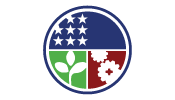The Bureau of Highway Maintenance offers introductory answers to frequently asked questions received by our office. Any links throughout the answers will guide you to further information on our Web site or from other sources. Should you have any further questions, please consult our
Contact Us page.
- Winter Snow Removal and Winter Driving Safety Tips
|
- How does the New Hampshire Department of Transportation (NHDOT) prepare for winter?
- The preparation begins in the summer when orders are placed and shipments start for the anticipated quantities of salt and sand needed for the upcoming season. Trucks and plows are inspected and repairs made as necessary. The number of plow trucks required are determined and private contractors are signed up to supplement state equipment. Training of employees in the latest methods of snow removal is also provided.
|
- During a snowstorm is it safe for me to be out driving around?
- This depends greatly on your vehicle, driving skills, mental or physical condition, the need to be out, and above all, the type or intensity of the storm. The best advice is to call the NH Department of Transportation, Traffic Management Center (TMC) at 511 or 511.com on-line. Weather conditions as reported by NHDOT at various locations across the state can be found on the Internet at www.nhdot.com In most storms, it is recommended that travel be limited to essential trips only.
|
- I am uncomfortable following slow moving snowplow trucks during a storm. Couldn’t they go faster or pull over frequently to allow traffic to pass them?
- Plow trucks travel at a speed necessary to safely perform the work. Following plow trucks too closely can be dangerous to you and the driver of the truck. Many times a snow cloud will be created behind the plow truck that can obscure your vision in addition to "hiding" your vehicle. Any emergency stops or turns by the plow truck could result in a rear end collision. It is safer for you to stay back and be patient. By pulling over, the truck would lengthen the time it would take to clear the roads plus you would be driving on a snow-covered road instead of a cleared one. Additionally the passing vehicle has a tendency to accelerate, which on a snow covered road could lead to loss of control and a potential head on crash with oncoming traffic.
|
- What materials does NHDOT use in performing snow and ice removal?
- Salt (sodium chloride), sand and calcium chloride are all utilized in combating winter storms in New Hampshire. Salt is the principal deicer, as it has been proven to be the most cost effective deicer available. Sand enhances traction on hills and corners during a storm. Calcium chloride is used with salt in very cold storms to act as a trigger to start the formation of salt brine to aid in the deicing process.
|
- During the last snowstorm the plow truck knocked over my mailbox, will the state repair/replace it?
- Despite our precautions, plow trucks or the plowed snow can inadvertently strike or push over a mailbox. This usually occurs during periods of low visibility or during heavy snowfalls. The Department will not assume responsibility for repairs to those boxes located in our Right-of-Way, we will work with the homeowner to locate or design a mailbox system that will minimize snowplow damage.
|
- Why is my road the last to get plowed?
- NHDOT has classified all of its roads for priority work based upon the importance of the highway and traffic volumes. Plow routes are assigned to various trucks to comply with the Department’s Snow & Ice Policy, which indicates the allowable snow accumulation on the road and the frequency of the plowing effort.
|
- Why doesn’t the snowplow carry the snow past my driveway instead of plowing into it?
- As we plow we need to keep a consistent plowed width of roadway. If the truck swerved out around your driveway or stopped to push the snow around it, this width would vary and could force a vehicle to strike the snow ridge if oncoming traffic was encountered.
|
- I just get my driveway cleared and the snowplow comes by again and fills the end in again. How often is this going to happen?
- During a storm we will continue to plow and treat the roads until cessation of the storm. A final run is made to push back the snow banks to prevent snowmelt from running onto the travel surface, provide more room for additional snow storage and increase sight distance and visibility.
|
- On multi-lane highways there are up to six plows in a row, why are there so many?
- Plowing in echelon clears the snow from all the lanes at once, eliminating snow ridges that might be a hazard to motorists. If you encounter this, please stay back and do not attempt to pass among the plow trucks.
|

